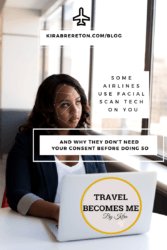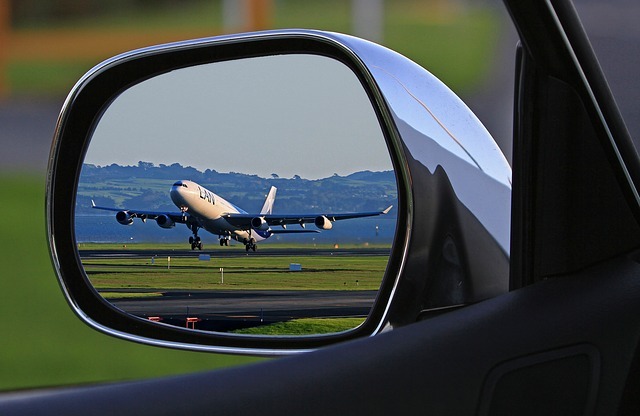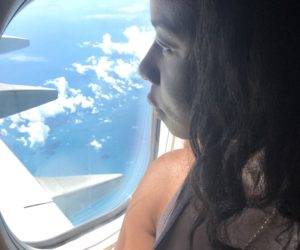Recently several airlines and airports began using facial recognition technology instead of scanning boarding passes. I first became aware of this practice when I saw a video where a passenger was demonstrating usage of the technology overseas. In fact, you might remember that a few weeks ago I shared the video of a Latino traveler in China in my Instagram stories. You can check out the video here.
Yes that’s right he walked in front of a screen, it scanned his face and it pulled up his name, gate, and seat number. I was immediately dismayed. 🤦🏾♀️
Ok, so I’ll admit I probably get a little bit carried away when it comes to not handing over biometric data. I still don’t have TSA Pre✓® or Global Entry® although I travel internationally all the time because it requires fingerprinting. I don’t have CLEAR® because I was not with the eye scans or fingerprinting it requires. I mean if I’m being entirely honest I also refuse to use the retina scan or fingerprinting options on my phone.
YES, I know all of this technology makes life easier and NO, I don’t care if I can save hours of wait time. I have been traveling a long time without these extra conveniences so I don’t really know what I’m missing. 🤷🏾♀️
So you can imagine my shock and surprise when I found out that my attempts to avoid handing over biometric data were in vain because some airlines were already scanning faces using facial recognition technology and unless you opt-out of usage of this technology, you are consenting to the face scan. SIGH! 🤦🏾♀️
HOW THE FACIAL RECOGNITION TECHNOLOGY WORKS
But here’s where it gets interesting — because it is government facial recognition technology that is being used, the technology also reportedly sends that information to Customs and Border Patrol (CBP) to verify identity and flight details on behalf of the airline. The scanned records are then-cross referenced with CBP records to verify identity and flight details on behalf of the airline and clear the passenger to board the plane. CBP can then store your updated image in accordance with federal government guidelines for maintenance of records that come into its possession.
HOW AIRLINES BEGAN USING FACIAL RECOGNITION TECHNOLOGY
It reportedly all started with an executive order issued by the Trump Administration encouraging airlines to use government facial recognition technology in connection with the newly-launched American Artificial Intelligence Initiative. Read the Executive Order here. In response, several airlines, instead of verifying passengers’ details by scanning a boarding pass, decided to “step into the future” and scan passenger faces in partnership with the Transportation Security Administration and Customs and Border Patrol.
WANT PROOF OF THESE PARTNERSHIPS BETWEEN AIRLINES AND THE U.S. FEDERAL GOVERNMENT?
The JetBlue® statement on facial recognition technology is here. They also had some explaining to do so (which did not go so well when a customer complained). Read the twitter exchange here.
And the Delta® Statement on the facial recognition technology is available here.
The American Airlines® Statement on facial scans is here.
And find the British Airlines® Statement on the usage of facial recognition technology is here.
BUT IT GETS WORSE
The congressional hearings on government facial recognition technology make this even more concerning (you can watch it here (my favorite part of the hearing is from 1:48:50 to 1:51:00 but there are many segments that you can watch to get the point). If you watch it, you see that speakers during the hearing expressed concerns that facial recognition technology is most accurate when used on white males. That’s right, the technology is more likely to confuse you with someone else (which may or may not cause you travel delays or other “complications” for obvious reasons) if you are a Woman or a Person of Color.
HOW DO YOU OPT-OUT OF FACE SCANS
Opt-out options change as the usage of the facial recognition technology expands and evolves but generally, there are 2 ways to opt-out:
- Do not follow instructions to have your face scanned at the airport and instead insist on a regular check-in process with issuance of boarding passes
- Check-in online and get your boarding passes issued for usage throughout the airport
You should also be on the lookout for any signs that say you can opt-out, but also be mindful that there may be none at all. You may have to opt-out multiple times from arriving at the airport until you sit in your airplane seat.
Also, airline usage of these technologies is still in the pilot phase for many airlines so it is currently just being used at high traffic airports.
So what are your thoughts on this? Does the whole thing make you anxious like me or are you generally fine with it? Let me know in the comments.



Kira Brereton is a Luxury Travel Financial Strategist and the Founder of Travel Becomes Me. You can access some of her training on you can Travel Luxe for Less here. You can find her on Instagram on @TravelBecomesMe and over at www.kirabrereton.com



